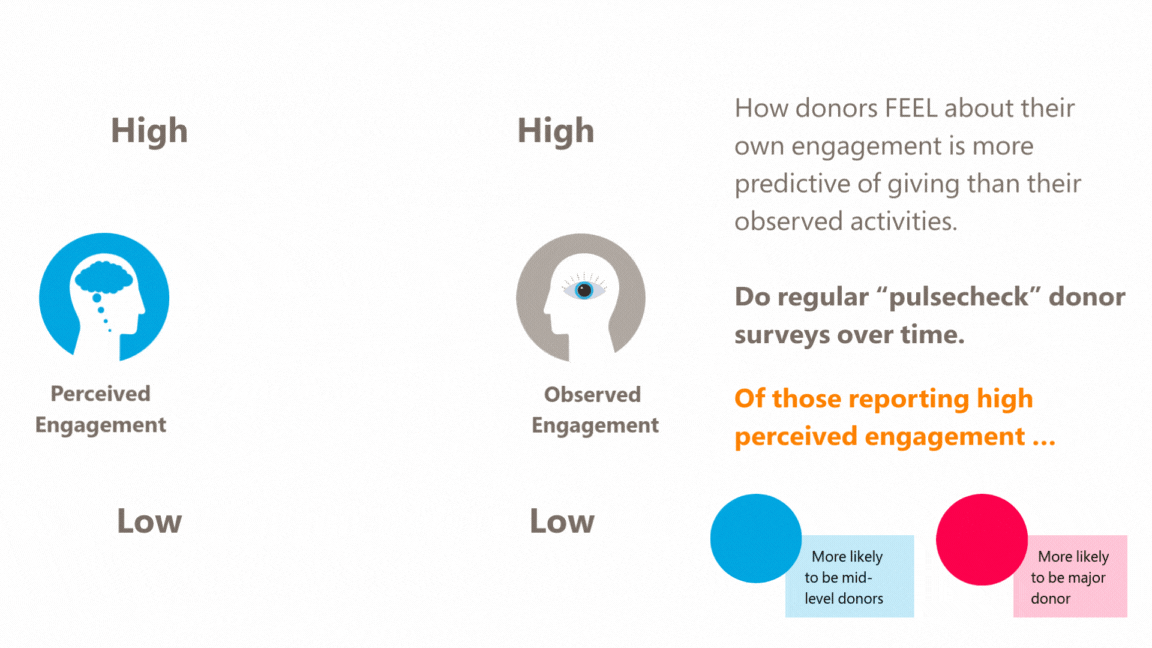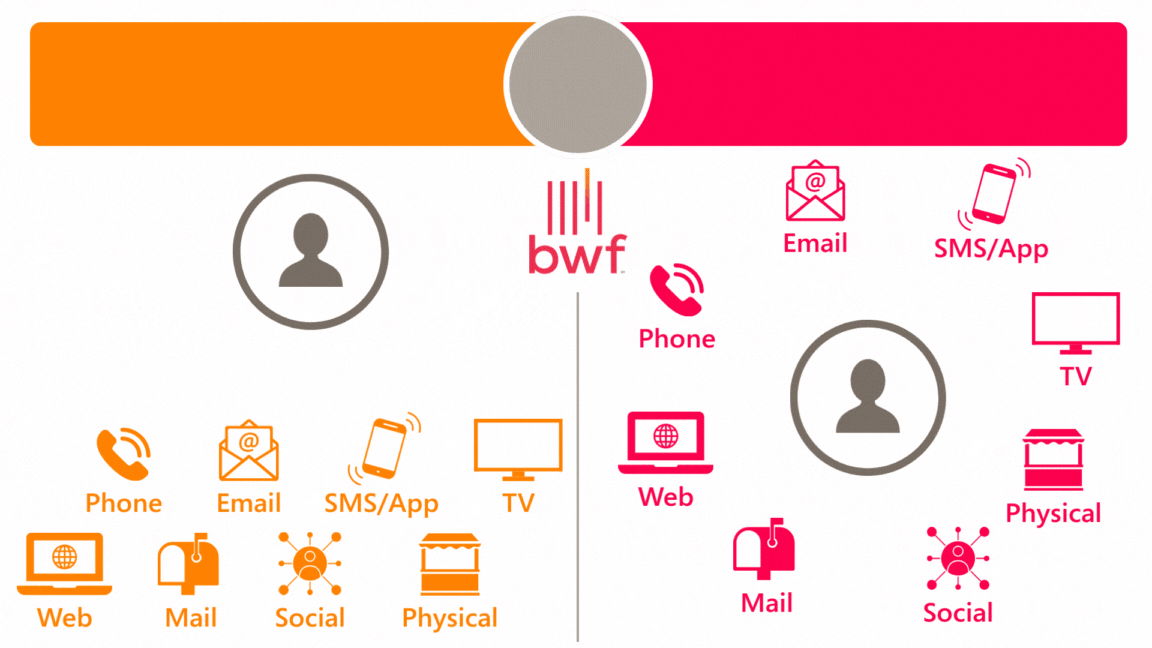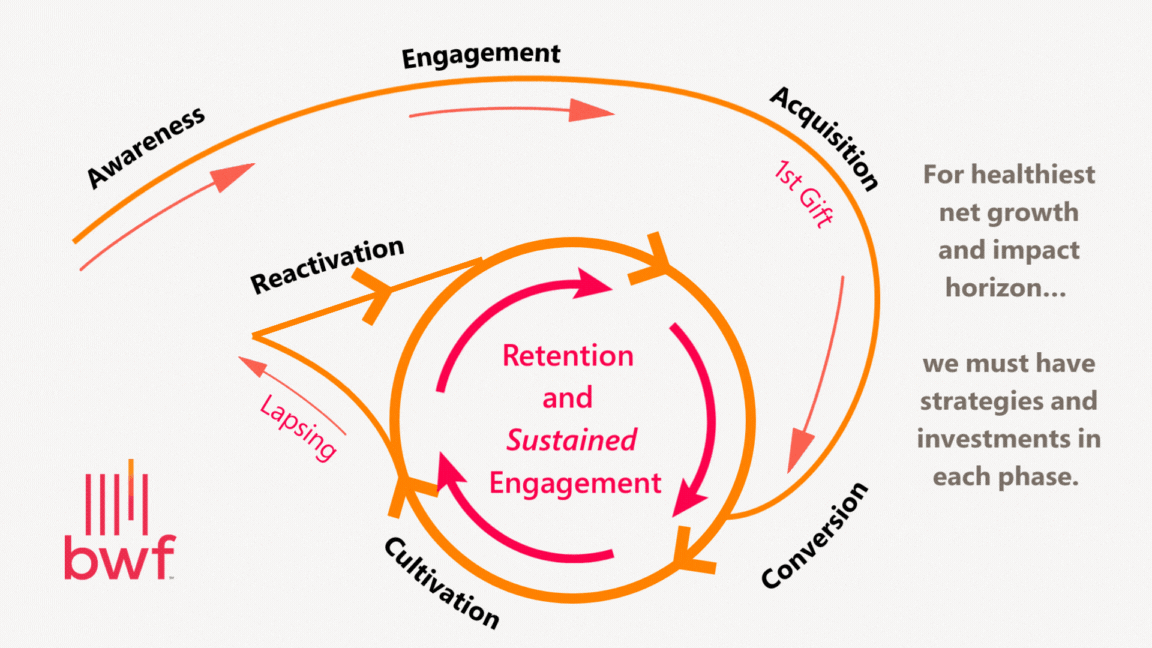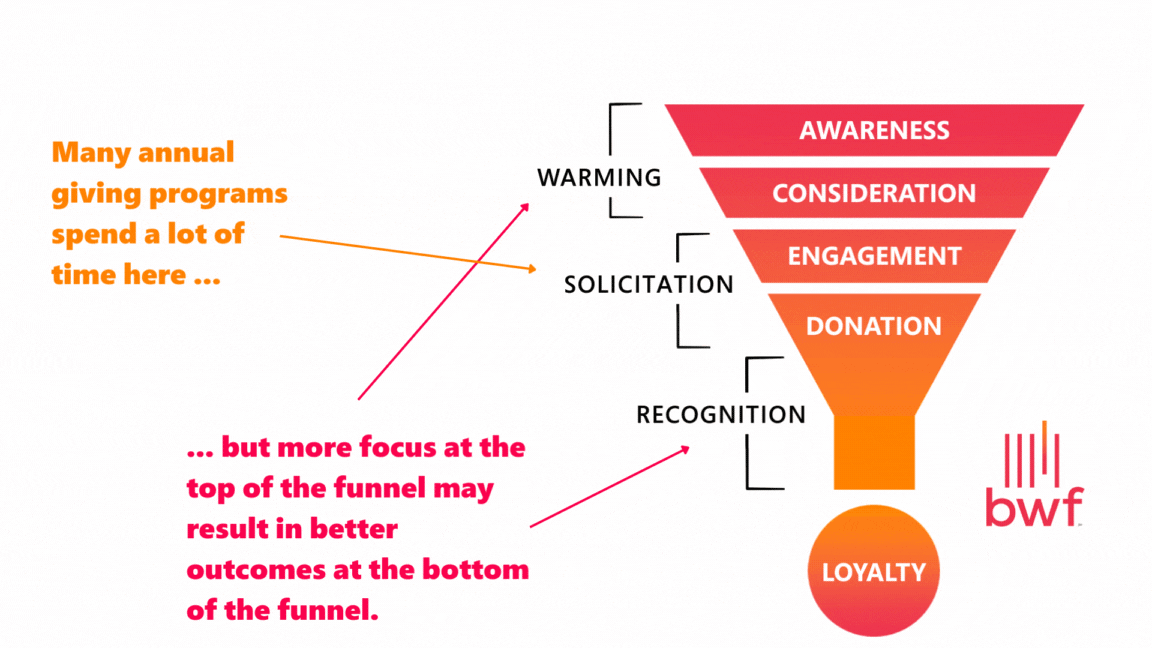Reversing Donor Declines
Why Everyday Donors are the Key to Long-Term Philanthropic Growth

At BWF, we’ve partnered with institutions across the globe that are rewriting this story and not accepting this trend as inevitable.
Their secret? Strategic investments in engagement, modern digital approaches, and an unapologetic belief in the long-term power of everyday donors.
These institutions and their advancement teams are changing their strategies and tactics to meet the requirements, interests, and giving patterns of today’s donors across the giving spectrum.
Broad-Based Giving’s Impact

Beyond the Major Gift Mindset
For years, many organizations have focused heavily on major and principal gifts, often at the expense of their broad base. As goals and expectations increased, putting resources toward high-net-worth and ultra-high-net-worth fundraising strategies was the fastest way to hit campaign goals and fundraising revenue requirements. While this strategy may yield impressive short-term results, it is not sustainable on its own and limits the development of the entire pipeline.
Our long-term engagement analyses consistently demonstrate that today’s annual donor is tomorrow’s major donor—if they’re engaged effectively. Additionally, as we are seeing a general decline in generosity across America, we need to support the development of generous habits and regular giving. We need to engage the base, build community, and drive generosity across all levels of donors.
Take the example of George Washington University. Following several years of donor count decline, GW implemented a revitalized, multichannel engagement strategy. The results were significant: a 5% increase in total donors in FY23, followed by an additional 9% increase in FY24. Importantly, these gains were accompanied by a measurable increase in donor engagement, a signal of sustainable momentum, not just a temporary spike.
Similarly, at a leading children’s hospital, a digital-first, year-end campaign produced a 51% increase in revenue and a 24% increase in donor count. These metrics don’t just reflect good marketing, they reflect a broader organizational commitment to cultivating a robust base of philanthropic support.
The True Cost of Neglecting Everyday Donors
When organizations fail to invest meaningfully in building and nurturing a broad base of everyday donors, the consequences go far beyond donor count. This strategic oversight creates ripple effects that hinder long-term sustainability, limit programmatic reach, and ultimately weaken the institution’s ability to fulfill its mission. The risks are both tangible and reputational—from lost revenue and reduced flexibility to a diminished donor pipeline and greater susceptibility to external pressures.
Below are just a few of the compounding impacts that result when broad-based engagement is undervalued or overlooked:
- Financial instability due to inconsistent, unpredictable funding.
- Narrower community representation and social impact.
- Fewer future major gift prospects.
- Limited donor pipeline scalability.
- Competitive disadvantages in a sector defined by innovation and trust.
The absence of sustained investment, long-term thinking, and robust analytics puts a ceiling on what fundraising programs can achieve. And perhaps most concerning, it sends a message to donors that their early engagement isn’t valued.
Redefining Engagement in 2025 and Beyond
The strategic shift we recommend is clear: Nonprofits must move from a transactional “ask-first” model to a long-view engagement approach rooted in relationships and value exchange.
One of the most significant insights from our research is that how donors feel about their engagement is more predictive of future giving than what they do. This is why donor experience (DX) and engagement surveys should be routine, not an afterthought. Engagement is not a luxury—it’s a requirement for net growth.
Measure Donor Engagement Through Analysis and Survey

Digital-First, Journey-Driven Strategy
In an environment where attention spans are shorter, digital clutter is high, and donor expectations are evolving, traditional communication tactics no longer suffice. Today’s donors—whether they’re new graduates, parents, alumni, or friends—expect authenticity, immediacy, and relevance. That’s why modern advancement programs must prioritize a digital-first, journey-driven strategy that places the donor experience at the center of every interaction.
This doesn’t mean launching a few scheduled emails or updating the homepage once a year. It means building a highly responsive communications ecosystem that engages donors where they are, with the content they care about, and on the platforms they use most. It’s about creating a dynamic, omnichannel cadence that mirrors how donors consume information and make decisions in every other part of their lives.

At BWF, we’ve seen firsthand that successful programs are no longer obsessed with asking—they’re obsessed with engagement. And that shift is paying off. Institutions that embrace a journey-based strategy anchored in behavioral data and personalized storytelling are not only stabilizing donor count, they’re growing it.
Shared Definition: What Is a Journey?

In practical terms, this means organizations must:
- Implement automated, personalized, multi-step digital journeys tailored to donor behaviors, engagement levels, and preferences. Whether it’s welcoming a first-time donor, stewarding a recurring monthly supporter, or reactivating lapsed givers, each touchpoint should be relevant, timely, and intentional.
- Prioritize compelling, short-form video content that resonates emotionally, builds trust, and showcases real stories of impact. These assets humanize your mission and reinforce the donor’s role in achieving it. From stewardship thank-yous to Giving Day momentum videos, video content now plays a critical role in acquisition, engagement, and retention. It’s not just about producing content, it’s about producing connection.
- Use real-time data and A/B testing to constantly optimize the donor experience. What are donors clicking on? Which subject lines drive conversion? What imagery performs best with different age segments? These aren’t just technical details; they’re insights that drive more effective and personalized communications at scale.
- Integrate digital storytelling across email, paid social, web, and SMS to ensure consistent messaging and a seamless donor journey. This approach allows campaigns to meet donors at multiple moments throughout their decision-making process, reinforcing messages and increasing the likelihood of action.
These strategies aren’t aspirational. They’re working—right now.
At UConn, a well-orchestrated year-end and Giving Day strategy—built on short-form video, layered digital storytelling, and precise segmentation—resulted in a 38% increase in revenue, a 7% increase in donors, and more than 171,000 video plays in just one campaign cycle. This isn’t just donor retention—it’s donor enthusiasm.
The Donor Engagement Continuum

A Vision for the Future and Scalable Impact
It’s time to build a tangible, multi-year vision—not just for revenue, but for donor count growth, retention, and engagement. This isn’t about donor satisfaction—it’s about donor activation.
We challenge institutions to:
- Create integrated budgets that support both short-term goals and long-term donor development.
- Prioritize collaboration between annual giving, donor relations, marcomm, and advancement services.
- Adopt a funnel mindset (like the BWF ACE Model below) that supports all donor phases—acquisition, cultivation, engagement, and upgrade.
- Build a team of strategic thinkers who are hungry for change and comfortable testing, analyzing, and optimizing in real time.
The Fundraising Funnel
(BWF ACE Model)

If you’re seeing donor counts decline, don’t accept it as inevitable. Instead, see it as a call to act. Everyday donors aren’t just worth the effort—they’re essential to the resilience, scale, and inclusivity of your mission. It’s all about capturing attention and inspiring action.
We know the path forward, and we’ve walked it with our clients. Let’s plant the seeds today—for shade, and for growth, tomorrow.
To learn more about how BWF can help you reverse donor declines and scale future impact, please check out our annual giving services.
Any document sent or prepared by BWF may contain proprietary and confidential information belonging to BWF. This information is considered the intellectual property of BWF, and may be protected by trademarks, copyrights, or other legal protections. The information is intended only for the use of the intended recipient. No one may copy, disclose, or distribute this information without the written permission of BWF.

